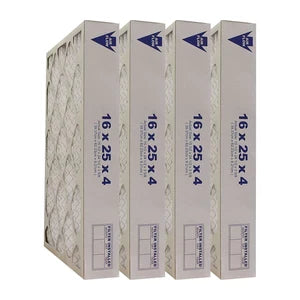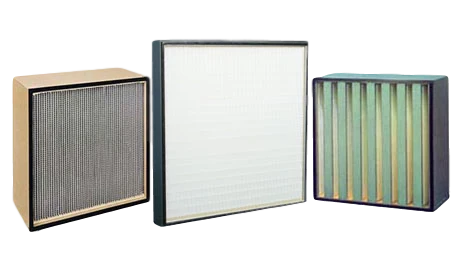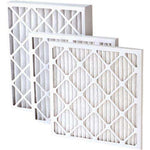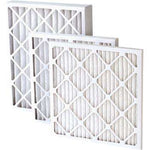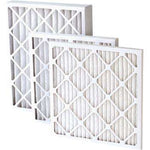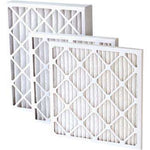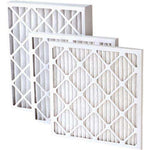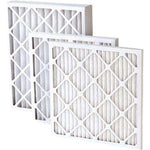You have no items in your shopping cart.
As far as home improvement goes, furnace filters are definitely way down on the excitement ladder. There’s no real proud moment, or sense of accomplishment after having changed the filter. Yep - it's quite mundane and downright boring.
But there can be big impact even in little things, and finding the right furnace filter can not only save money, but also improve indoor air quality. Originally, filters were designed to protect the moving parts of the furnace itself, but thanks to technological advancements, filters now prevent harmful particles from cycling back into the air that you breathe at home.
During cold weather, many people think of the furnace as a valuable home heating appliance. It is also an effective air cleaner, but that partly depends on your choice of filters. Dust and debris perpetually circulate throughout indoor environments. Basic air furnace filters prevent large particles from gradually clogging up and impairing the home heating system.
Advanced filters protect both the furnace as well as your household's respiratory health. Filter size measurements are fairly standard, but there are efficiency, cost, convenience and health aspects that vary significantly across the choices that you have for these essential home heating accessories.
The Minimum Efficiency Reporting Values (MERV) scale rates the efficiency on a scale of 1-20.
The minimum efficiency reporting value (MERV) scale goes from 1 to 16. Most residential filters range from 4 to 12.
Furnace manufacturers prefer the traditional spun fiberglass filters (MERV 2) because they filter out enough of the large particles to protect the furnace while providing maximum airflow. Maintaining the furnace manufacturer's specified airflow is critical to achieving energy efficiency and maximum life from the blower motor and heat exchanger. An inexpensive 4" MERV filter captures 80 percent of the particles 50 microns and larger, but only 25 percent of the particles in the 3 to 10 micron range.
For most homeowners, a more expensive MERV 7 or 8 pleated filter provides a good balance between cost and air filtration efficiency. These filters trap 80 to 95 percent of the particles 5 microns and larger—more than enough filtration for most households.
Furnace efficiency is one thing. But if you're a clean freak or have family members with allergies or low-immunity issues, spend more on a high-efficiency (MERV 11 and higher) filter. Then just make sure you stay on top of filter changes to protect your furnace.
Permanent electrostatic – similar to their disposable brethren, these contain self-charging cotton fibers that attract particles. Permanent options have a removable, machine-washable filter that can be removed and reused for six to eight years. MERV rating: 8,
Pros: Little waste, more effective than pleated; a good option if you use a popular size
Cons: Less effective than electrostatic, custom sizes are expensive
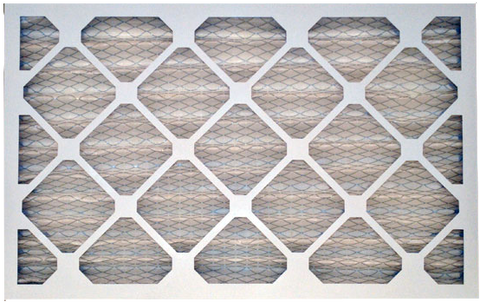
High-Efficiency Filters
High Efficiency "Particulate Air" filters are becoming an integral part of the modern consumer vocabulary, even appearing in vacuum cleaners. A HEPA filter also has application in medical and commercial settings as well, because it removes most of the smallest, most irritating particles from the indoor air. Some high-efficiency filters nearly destroy all germs that circulate in your home’s air, using integrated ultraviolet light technology. The composite materials used to make high-efficiency filters are themselves antimicrobial. High efficiency filters are generally more expensive than standard disposables, but the benefits of better indoor air quality are worth it for people such as chronic asthma and allergy sufferers.
HEPA filters

HEPA filters are recognized by the Occupational Safety and Health Administration and EPA as the ultimate product for cleansing airborne particles. HEPA products filter air at a very fine level, blocking elements that are 0.3 microns or larger. These filters catch 99.97 percent of all particles.
HEPA filters have an efficiency rating of 17 to 20. Most residential heating and cooling systems can't accommodate HEPA filters because of the product's dimensions and resistance to airflow. Switching to HEPA filters will significantly improve your indoor air quality but probably require calling a heating and cooling professional to retrofit your furnace.
Air Filter Quality Ratings Chart

As far as home improvement goes, furnace filters are definitely way down on the excitement ladder. There’s no real proud moment, or sense of accomplishment after having changed the filter. Yep - it's quite mundane and downright boring.
But there can be big impact even in little things, and finding the right furnace filter can not only save money, but also improve indoor air quality. Originally, filters were designed to protect the moving parts of the furnace itself, but thanks to technological advancements, filters now prevent harmful particles from cycling back into the air that you breathe at home.
During cold weather, many people think of the furnace as a valuable home heating appliance. It is also an effective air cleaner, but that partly depends on your choice of filters. Dust and debris perpetually circulate throughout indoor environments. Basic air furnace filters prevent large particles from gradually clogging up and impairing the home heating system.
Advanced filters protect both the furnace as well as your household's respiratory health. Filter size measurements are fairly standard, but there are efficiency, cost, convenience and health aspects that vary significantly across the choices that you have for these essential home heating accessories.
The Minimum Efficiency Reporting Values (MERV) scale rates the efficiency on a scale of 1-20.
The minimum efficiency reporting value (MERV) scale goes from 1 to 16. Most residential filters range from 4 to 12.
Furnace manufacturers prefer the traditional spun fiberglass filters (MERV 2) because they filter out enough of the large particles to protect the furnace while providing maximum airflow. Maintaining the furnace manufacturer's specified airflow is critical to achieving energy efficiency and maximum life from the blower motor and heat exchanger. An inexpensive 4" MERV filter captures 80 percent of the particles 50 microns and larger, but only 25 percent of the particles in the 3 to 10 micron range.
For most homeowners, a more expensive MERV 7 or 8 pleated filter provides a good balance between cost and air filtration efficiency. These filters trap 80 to 95 percent of the particles 5 microns and larger—more than enough filtration for most households.
Furnace efficiency is one thing. But if you're a clean freak or have family members with allergies or low-immunity issues, spend more on a high-efficiency (MERV 11 and higher) filter. Then just make sure you stay on top of filter changes to protect your furnace.
Permanent electrostatic – similar to their disposable brethren, these contain self-charging cotton fibers that attract particles. Permanent options have a removable, machine-washable filter that can be removed and reused for six to eight years. MERV rating: 8,
Pros: Little waste, more effective than pleated; a good option if you use a popular size
Cons: Less effective than electrostatic, custom sizes are expensive

High-Efficiency Filters
High Efficiency "Particulate Air" filters are becoming an integral part of the modern consumer vocabulary, even appearing in vacuum cleaners. A HEPA filter also has application in medical and commercial settings as well, because it removes most of the smallest, most irritating particles from the indoor air. Some high-efficiency filters nearly destroy all germs that circulate in your home’s air, using integrated ultraviolet light technology. The composite materials used to make high-efficiency filters are themselves antimicrobial. High efficiency filters are generally more expensive than standard disposables, but the benefits of better indoor air quality are worth it for people such as chronic asthma and allergy sufferers.
HEPA filters

HEPA filters are recognized by the Occupational Safety and Health Administration and EPA as the ultimate product for cleansing airborne particles. HEPA products filter air at a very fine level, blocking elements that are 0.3 microns or larger. These filters catch 99.97 percent of all particles.
HEPA filters have an efficiency rating of 17 to 20. Most residential heating and cooling systems can't accommodate HEPA filters because of the product's dimensions and resistance to airflow. Switching to HEPA filters will significantly improve your indoor air quality but probably require calling a heating and cooling professional to retrofit your furnace.
Air Filter Quality Ratings Chart

